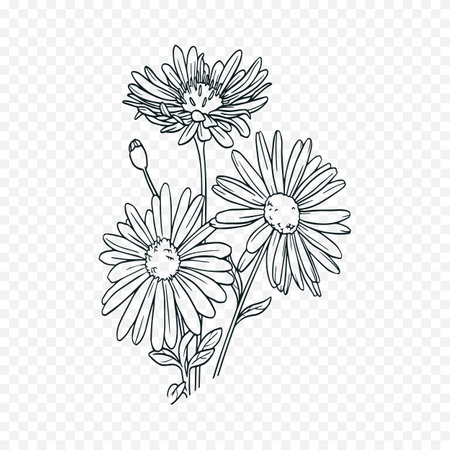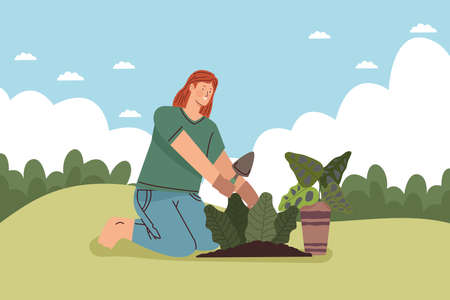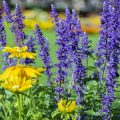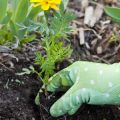1. Understanding the Importance of Pollinators
Pollinators like bees, butterflies, hummingbirds, and even some beetles play a vital role in keeping our environment healthy. These small creatures help plants reproduce by transferring pollen from one flower to another. Without them, many of the fruits, vegetables, and flowers we enjoy wouldnt exist.
Why Are Pollinators So Important?
Pollinators are essential for food production and biodiversity. In fact, about one-third of the food we eat relies on pollination. This includes common crops like apples, almonds, blueberries, and pumpkins. Beyond food, pollinators also help native plants grow and support wildlife habitats.
Common U.S. Pollinators
| Pollinator | Description | Common Regions |
|---|---|---|
| Honeybee | Famous for honey-making and crop pollination | Nationwide |
| Bumblebee | Larger bees that are great at pollinating native plants | Northern and temperate areas |
| Monarch Butterfly | Migratory butterfly known for its long journey across North America | Eastern and Western U.S. |
| Hummingbird | Small birds that pollinate tubular flowers while feeding on nectar | Western and Southern U.S. |
| Mason Bee | Solitary bees that are efficient springtime pollinators | Widespread in gardens and orchards |
How Your Garden Can Help
You don’t need acres of land to make a difference. Even a small backyard or patio garden can provide valuable food and shelter for pollinators. By planting wildflowers native to your region, you’ll offer nectar and pollen sources that local pollinators recognize and rely on.
The Benefits of a Pollinator-Friendly Wildflower Garden:
- Supports local ecosystems: Native wildflowers attract native pollinators, strengthening biodiversity.
- Encourages healthy plant growth: More pollinators mean better flower and fruit production.
- Adds natural beauty: A variety of colorful blooms enhances your yard’s appearance.
- Lowers maintenance needs: Native plants are typically hardy and require less water and care.
Your backyard can become a haven for essential species that keep our environment thriving. All it takes is understanding their importance and making thoughtful planting choices.
2. Choosing Native Wildflowers for Your Region
When planning a pollinator-friendly wildflower garden, choosing the right plants for your specific location is key. Native wildflowers are not only adapted to your local climate and soil, but they also provide the ideal habitat and food sources for native bees, butterflies, hummingbirds, and other pollinators. By selecting species that thrive in your USDA hardiness zone, you’ll create a resilient garden that supports biodiversity year-round.
Why Native Wildflowers Matter
Native plants have co-evolved with local wildlife over thousands of years. This means pollinators recognize them as familiar food sources. Unlike non-native species, native wildflowers require less water, fertilizer, and maintenance once established. They’re also more resistant to local pests and diseases.
Find Your USDA Hardiness Zone
The USDA Plant Hardiness Zone Map divides North America into 13 zones based on the average minimum winter temperature. Knowing your zone helps you choose plants that can survive and thrive in your area’s climate.
How to Check Your Zone
You can find your USDA zone by entering your ZIP code on the USDA Hardiness Zone Map. Once you know your zone number, use it as a guide when selecting wildflower species.
Examples of Native Wildflowers by Region
Here’s a simple reference table with popular native wildflowers suited for different U.S. regions and their corresponding USDA zones:
| Region | USDA Zones | Recommended Native Wildflowers |
|---|---|---|
| Northeast | 3–7 | Black-eyed Susan, New England Aster, Joe-Pye Weed |
| Southeast | 7–9 | Purple Coneflower, Coreopsis, Butterfly Milkweed |
| Midwest | 4–7 | Bergamot (Bee Balm), Prairie Blazing Star, Wild Lupine |
| Southwest | 6–10 | Desert Marigold, California Poppy, Penstemon |
| West Coast | 7–10 | Tidy Tips, Yarrow, Douglas Aster |
| Pacific Northwest | 6–9 | Camas Lily, Oregon Sunshine, Red Columbine |
| Mountain West | 3–8 | Rocky Mountain Penstemon, Blanketflower, Blue Flax |
Selecting for Pollinators’ Needs Throughout the Seasons
A great pollinator garden includes a variety of wildflowers that bloom at different times of year. This ensures a continuous source of nectar and pollen from spring through fall.
Tip:
Aim to include at least three different species that bloom in each season—early spring, summer, and late fall—to keep pollinators coming back all year long.
Avoid Invasive Species and Cultivars with Low Nectar Value
Not all pretty flowers are good for pollinators. Avoid invasive plants like Purple Loosestrife or aggressive cultivars bred for looks over nectar production. Stick with true native species whenever possible.
Your Local Extension Office Can Help!
If youre unsure where to start, contact your local Cooperative Extension office or native plant society. They can provide region-specific plant lists and gardening advice tailored to your location.
Selecting native wildflowers may take a little research up front, but the reward is a vibrant backyard filled with buzzing bees, fluttering butterflies, and thriving plant life—all working together in harmony.

3. Preparing Your Backyard for Planting
Before you start planting your wildflower garden, its important to get your backyard ready. Taking the time to understand your soil, sunlight, and drainage conditions will help your native wildflowers thrive and attract more pollinators like bees, butterflies, and hummingbirds.
Check Your Sunlight Exposure
Most wildflowers love the sun. Spend a day observing how much sunlight different parts of your yard receive. Choose an area that gets at least 6 hours of direct sunlight per day. If your yard has shady spots, don’t worry—there are shade-tolerant wildflower varieties you can consider later.
Evaluate Your Soil
Wildflowers can grow in many types of soil, but knowing what you have helps you choose the right seed mix and avoid problems down the road.
Simple Soil Test Tips:
| Soil Characteristic | What to Look For | Why It Matters |
|---|---|---|
| Texture | Sandy, Loamy, or Clay | Loamy soil is ideal; sandy drains fast; clay holds water |
| pH Level | Use a pH test kit (6.0–7.0 is best) | Affects nutrient availability for plants |
| Nutrients | Add compost if soil looks dry or pale | Healthy soil supports strong root growth |
Test Drainage
Poor drainage can drown seeds or roots. To check drainage, dig a hole about 12 inches deep and fill it with water. Let it drain completely, then refill it. If the second round of water hasn’t drained within 4 hours, your soil may need improved drainage—like adding compost or building raised beds.
Clear and Prep the Area
Remove grass, weeds, and debris from your chosen spot. This gives your wildflower seeds a better chance to take root without competition. You can use a shovel, hoe, or even solarize the area by covering it with clear plastic for a few weeks to kill existing vegetation naturally.
Add Organic Matter if Needed
If your soil is too sandy or heavy with clay, mixing in organic matter like compost or aged manure can improve its structure and fertility. This creates a better home for your wildflowers and helps retain just the right amount of moisture.
Tip:
You don’t need perfect soil—wildflowers are tough! But a little prep goes a long way in helping them grow strong and bloom beautifully.
4. Planting and Caring for Your Wildflower Garden
Once youve chosen the right wildflower mix and prepared your backyard space, its time to plant and care for your garden in a way that attracts pollinators like bees, butterflies, and hummingbirds. Here’s how to do it step-by-step.
When and How to Sow Wildflower Seeds
The best time to sow wildflower seeds depends on your local climate, but generally:
| Region | Best Time to Sow |
|---|---|
| Northern U.S. | Early Spring or Late Fall (before first frost) |
| Southern U.S. | Late Fall or Early Winter |
To sow your seeds:
- Loosen the top inch of soil using a rake or garden fork.
- Mix the seeds with sand (about 4 parts sand to 1 part seed) to help with even distribution.
- Scatter the mix evenly over the prepared area.
- Gently press the seeds into the soil by walking over them or using a roller—don’t bury them too deep.
- Water lightly but consistently until seedlings are established.
Managing Weeds Naturally
Weeds can compete with your wildflowers for water and nutrients. Here’s how you can manage them without using harmful chemicals:
- Mulching: Apply a light mulch of straw after planting to discourage weeds while letting sunlight reach the seeds.
- Hand Pulling: In early stages, hand-pull invasive weeds before they flower and spread seeds.
- Mowing: For larger gardens, mow high (around 6 inches) during the first year to cut back fast-growing weeds without harming young wildflowers.
Maintaining Healthy Blooms Year After Year
A little seasonal care goes a long way in keeping your wildflower garden vibrant and pollinator-friendly:
Year-Round Maintenance Tips
| Season | What to Do |
|---|---|
| Spring | Remove any leftover debris from winter; monitor new growth; water during dry spells. |
| Summer | Deadhead spent blooms to encourage more flowers; water deeply once a week if needed. |
| Fall | Let some flowers go to seed naturally; collect seeds if desired; cut back dried stems in late fall or leave them for winter habitat. |
| Winter | Avoid heavy foot traffic on frozen soil; let seed heads remain for birds and beneficial insects. |
Pro Tip:
If youre growing perennials, they may take a full season or two to really establish. Be patient—your pollinator paradise is worth the wait!
Caring for your wildflower garden doesnt have to be complicated. With just a bit of attention each season, youll enjoy beautiful blooms and buzzing pollinators year after year.
5. Creating a Year-Round Pollinator Habitat
Building a pollinator-friendly wildflower garden is a great first step, but to truly support pollinators like bees, butterflies, and hummingbirds, it’s important to think beyond just flowers. A successful backyard habitat provides food, water, shelter, and nesting opportunities throughout the entire year—even in the off-season. Here are some simple ways you can turn your garden into a year-round haven for pollinators:
Provide Clean Water Sources
Pollinators need fresh water just like any other animal. Adding a small water source in your yard can make a big difference. It doesn’t have to be fancy—just make sure it’s shallow and safe.
| Water Source | How to Set It Up |
|---|---|
| Shallow Dish with Pebbles | Fill a shallow dish or saucer with clean water and add pebbles so insects can land safely. |
| Birdbath | Place in a shaded area and keep it clean and filled with fresh water. |
| Mud Puddle | Create a damp area with soil and water—some butterflies love sipping from mud puddles! |
Add Nesting Sites and Shelter
Pollinators also need places to rest, hide from predators, and raise their young. Incorporating natural features into your yard helps meet those needs:
- Leave some bare ground: Many native bees nest underground. Avoid mulching every inch of your garden.
- Add bee hotels: These are small wooden boxes filled with hollow tubes where solitary bees can lay eggs.
- Pile up brush or logs: These make great shelter for overwintering insects like beetles and bumblebee queens.
- Avoid cutting everything back in fall: Leaving stems and seed heads gives pollinators places to overwinter.
Offer Off-Season Forage
Even when wildflowers aren’t blooming, pollinators still need food. Consider planting early bloomers and late-season flowers to extend the buffet across seasons.
| Season | Recommended Plants |
|---|---|
| Early Spring | Pussy willow, crocus, native willows, red maple |
| Late Fall | Goldenrod, asters, sedum, native sunflowers |
| Winter (Mild Climates) | Mahonia, winter heath, camellia (if non-invasive in your area) |
A Few More Tips for Year-Round Support:
- Avoid pesticides: Even organic ones can harm pollinators. Let nature balance itself out whenever possible.
- Diversify plant types: Include trees, shrubs, grasses, and perennials to offer structure and variety through the year.
- Create layered habitats: Pollinators benefit from vertical diversity—groundcover plants under taller species help provide microclimates and cover.
By thinking beyond blooms and incorporating these features into your garden design, you’ll create a thriving ecosystem that supports pollinators all year long.


